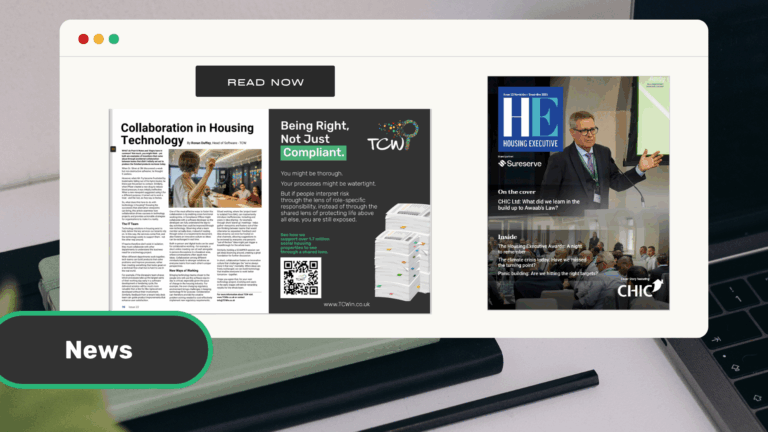Collaboration in Housing Technology
What do Post-It notes and Viagra have in common? Not much, you may think, yet they are both examples of inventions that came about by accidental collaboration between teams that initially didn’t set out to produce the finished products we know of today. When Dr Silver at 3M discovered a weak but non destructive adhesive, he thought it useless. However, when Mr Fry was frustrated by bookmarks falling out of his hymn books, he knew just the person to contact. Similarly, when Pfizer created a new drug to reduce blood pressure, it was initially ineffective. When a new viewpoint suggested they use it for a different purpose, it was found to work a treat! The rest, as they say, is history. What might this have to do with technology in housing? Knowing the successes that alternative viewpoints can bring, this article examines how collaboration drives success in technology projects, and provides actionable strategies for organizations to make it a reality.
‘The IT Team’
Technology solutions in housing exist to help deliver the key services our tenants rely on. In this way, the services come first, and the technology exists to support them, not the other way around! IT teams therefore don’t exist in isolation, and they must collaborate with other departments to understand the business need for a technology project. When different departments work together, tech teams can build products that solve problems and improve processes, rather than creating something that looks great on a technical flow chart, but is hard to use in the real world!
For example, if the disrepairs team can share what processes take up the largest parts of their working day early in a software development or tendering cycle, the delivered solution will be much more valuable than a like for like replacement without the team’s involvement. Similarly, feedback from a tenant help desk team can help guide product improvements that enhance user satisfaction. One of the most effective ways to foster this collaboration is by enabling cross-functional working time. A Compliance Officer might collaborate with a software developer to allow the developer to fully understand the current day to day activities that can be solved by new technology. Being able to observe what a team member actually does, instead of reading through notes or a requirements document, also fosters an innovative culture as ideas can be bounced back and forth. Both in person and digital tools can be used for collaborative working, for example a short online meeting can sit well alongside in-person discussions in a breakout area where conversations can often spark new ideas. Collaboration among different mindsets leads to stronger solutions as everyone learns from each other’s unique perspectives.
‘New Ways of Working’
Bringing technology teams closer to the teams who will use the software day to day is critical, especially given the pace of change in the housing industry. For example, the ever-changing regulatory environment brings challenges in terms of keeping technology fit for purpose. Collaboration therefore can provide the creative problem-solving required to cost-effectively implement new regulatory requirements. Siloed working where the ‘project’ team are isolated from BAU can mean that inefficiencies are inadvertently introduced. Including end users in idea sharing, for example through short ‘stand-up’ meetings, helps gather viewpoints and fosters out of the box thinking between teams who would otherwise be separated. Feedback and ideas streams can even be held on chat channels, so that suggestions can be reviewed by all; one person’s “out-of-the-box” thinking might just trigger a breakthrough for the whole team! Similarly, holding a SCAMPER session can get ideas bouncing around that can be a great foundation for further discussion.
In short, collaboration can foster an innovative culture that can take on the ‘we have always done it that way’ mentality. Ideas can be freely exchanged that build the technology that enables everyone to work better tomorrow, together. I hope you agree that for your next technology project, involving end users in the early stages will deliver rewarding results for the whole team.
Ronan Duffey
Head of Software – TCW
To read the full Housing Executive Magazine, that this editorial is featured in, follow the link.
https://housing-executive.co.uk/issue23/index.html

